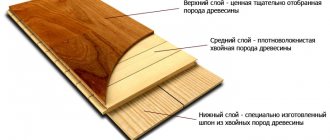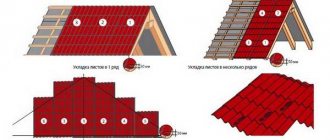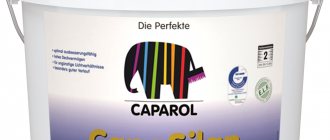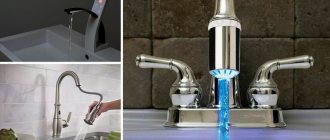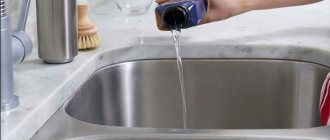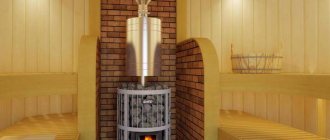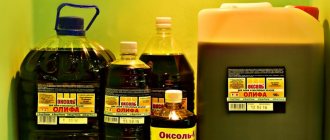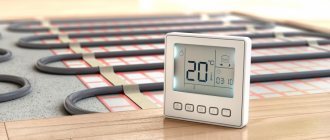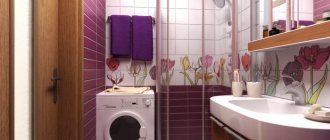- July 27, 2019
- Repair Tips
- Kristina Degtyareva
Construction or renovation is close to completion, the installation of drywall sheets is coming to an end, and therefore a number of questions arise, for example, whether drywall can be painted with paint or not, how to prepare it for this procedure, what materials should be used. When painting drywall, you will have to take many nuances into account. To make your task easier, we have collected all the recommendations in one material. We will tell you what preparatory work will need to be done and talk about the requirements for coloring compositions. In addition, you will find the answer to the question of what paint to paint drywall - the rating awaits you below!
Advantages of gypsum plasterboard staining
There are many advantages to this finishing method. Firstly, it is financial accessibility, and secondly, all painting work can be done with your own hands. Moreover, it is possible to choose exactly the color that matches the original design idea, and if you get tired of it over time, the surface can be repainted with a new one. In general, painting drywall with paint is a demanding task, but not at all difficult. How to prepare for it? Let's tell you right now.
Applying primer
High-quality painting of plasterboard without putty is impossible, so plasterboard walls can be treated with acrylic-based primers. Such primers have high permeability and better antiseptic properties.
Action plan:
- The primer composition should be distributed over a previously leveled and dried surface.
- A roller measuring 200-300 mm is used. You should work it thoroughly in the inner corners and hard-to-reach areas.
- During processing, all movements must be smooth, and gaps in the layers should not be allowed.
- It is enough to go through the primer 2-3 times, maintaining an interval of 4-5 hours. This time is enough for the primer to absorb and dry.
Preparatory stage
Experts do not recommend applying any paint to an unprepared surface. First, the drywall must be primed and then putty applied to it. For what reasons should this be done? Preliminary preparation is necessary in order to:
- increase the strength of the material;
- enhance the adhesive properties of the surface;
- reduce paint consumption due to the fact that it will be less absorbed into the surface.
Sometimes, after drying, spots appear on the drywall. This drawback can also be eliminated using putty. To carry out the preparatory work, you will need the following tools and materials:
- construction mixer;
- sandpaper – medium and coarse;
- brush (you can use a roller instead);
- screwdriver;
- primer;
- spatulas;
- serpyanka;
- putty – you will need a starting and finishing coat;
- metal corners.
As soon as everything necessary for work is ready, you can begin preliminary work. First of all, you should carefully inspect the surface and eliminate installation defects, if any.
The next stage of work is applying a primer to the drywall. Immediately after this, it is necessary to strengthen the butt and corner parts, do the initial puttying and grouting. Then you need to repeat the priming of the drywall, finishing putty, and then sand the surface. The final stage is finishing priming. Let's consider all the stages in order.
Materials and tools
To begin with, it is necessary to carry out a number of preparatory measures, so you cannot do without the following devices:
- set for applying plaster – spatula (50 and 500 mm), mixer, sandpaper;
- additional devices – electric drill, mixer attachment;
- painting equipment – roller, brushes, paint container, masking tape.
You can use a spray bottle to apply the dye. It will not only make the work easier, but will also allow you to obtain a layer of equal thickness and reduce material consumption. If you don’t have such equipment, you’ll have to arm yourself with brushes and paint the drywall yourself.
Padding
When speaking about whether it is possible to paint drywall without a preliminary primer or not, experts give a negative answer. The thing is that applying a primer improves the adhesive and water-repellent properties of plasterboard. In this case, a special antiseptic should be added to the finished composition, which will prevent the appearance of mold.
As for the choice of primer, any mixture will do, except alkyd primer - it is not suitable for drywall. The primer can be applied with a roller or brush.
Preparing the work surface
Before you begin painting, you need to carry out preparatory work, which includes:
- Thorough putty , preferably twice, especially at joints and recesses where screws are screwed in. In this case, the composition must be allowed to dry thoroughly.
- Sanding with sandpaper to get rid of small irregularities and make the structure smoother.
- Applying a primer for better adhesion of the paint to the working surface.
Of course, the plasterboard sheets themselves are quite smooth and do not require special preparatory work before painting. But if you want to achieve an ideal result, then you should not neglect them.
Which composition to choose
All putties that you can find in construction stores can be divided into three categories:
- Plaster. They are quite often used specifically for working with drywall. Such compositions are characterized by rapid setting and excellent adhesion. True, such putties also have a disadvantage - low resistance to moisture.
- Polymer. They have virtually no drawbacks, the only drawback being their high cost.
- Cement. They are considered by experts to be the best when it comes to drywall. Although such compositions take a long time to dry, they are resistant to moisture.
Drywall paint: which one to choose?
There are a huge number of options for paint and varnish materials. But not all are equally suitable for drywall. So what paint should you use to paint drywall? According to experts, the best option is water-soluble paints. But any paints that contain lime are contraindicated for such a coating.
Of course, it is recommended to choose paint for plasterboard surfaces taking into account the expected operating conditions; you should also focus on the purpose of the surface. Because of this, the texture of the paint is of particular importance. Thus, glossy surfaces can visually expand the space, and they are not difficult to care for. However, the process of painting drywall with glossy paints is labor-intensive; any, even the most minor, flaws will be clearly visible. Matte finishes are one of the best options for ceilings. They are able to hide defects, however, it is quite difficult to care for such surfaces. A compromise option is semi-matte paints, which have the advantages and disadvantages of both options.
Question of color
When talking about which drywall paint to choose, you should separately consider its color. So, any bright poisonous shades are not suitable for the ceiling. Large surfaces painted in rich colors look great in large rooms, but they are simply out of place in cramped hallways or small kitchens. Designers recommend painting the walls in the living room, hallway, and bedroom in a darker shade compared to the ceiling. This will avoid the feeling of pressure from being in the room. It is not recommended to use the same shade for all surfaces - the ceiling, the floor, and the walls. Contrasting colors can only be used in spacious rooms.
Is it possible to paint without putty?
According to paint manufacturers, this stage should not be neglected; it is better to putty the surface and even more than once. Without this, savings will be doubtful, and many problems will arise. But if you still decide, then the workspace needs to be cleaned with a vacuum cleaner and the finishing areas must be sanded especially carefully.
Enamel paints
Beginning repairmen often ask whether it is possible to paint drywall with enamel paint. Experts answer: not only is it possible, but it is necessary. This option is considered preferable for several reasons: firstly, enamel paints dry quite quickly, they are durable and allow you to cover the surface of drywall as tightly as possible. True, such paints and varnishes also have disadvantages. For example, they are quite toxic, which means they are not suitable for all rooms. Another disadvantage is the high cost, sometimes simply unreasonably high. It should also be taken into account that before painting with enamel, drywall must be carefully prepared: in addition to the procedures described above, it is necessary to treat the surface with PVA glue.
Water-based paints
When talking about what paint to paint drywall with, we cannot fail to mention water-based paints. They are incredibly easy to apply to the prepared surface, wash off easily from brushes, which means they are suitable for use even by beginners in painting. This paint has many positive properties: it creates a pleasant velvety texture, penetrates perfectly into drywall and thoroughly covers it. When painting drywall with water-based paint, a thin matte film with breathing pores is formed, completely invisible to the naked eye. It should be noted that such materials are environmentally friendly, therefore they are perfect for any residential premises.
Of course, it was not without its drawbacks. For example, the question often arises about whether it is possible to paint drywall in a bathroom with water-based paint. Let's say right away: such compositions are afraid of dampness. Therefore, water-based emulsion is not the best option for rooms with high humidity. Another disadvantage of water-based paint for drywall is that it costs too much.
Preparing for painting
First of all, empty the room, cover the windows and doors with film or paper (this is done to prevent paint and small particles from sanding from getting in). To reach the ceiling and upper sections of the walls, a stepladder is useful.
Scaffolding is prepared for working with the ceiling
Use gloves at all stages, and when sanding and painting, use a mask and special glasses.
Preparation for work:
- Priming – the primer is applied with a roller for better contact with the paint; the putty is also covered with a layer of primer. It is not advisable to paint plasterboard sheets directly without priming, since they are unevenly saturated with paint and stains will appear. To prime drywall, you do not need a deep penetration primer; a universal one will do. Two layers of primer are enough, the second is applied after the first has dried.
- Putty joints and seams. The locations of the screws are also puttied. To do this, use a wide spatula and reinforcing tape.
- Sanding with fine sandpaper to final level the drywall is very important when painting the ceiling and when using glossy paints. After sanding, the settled dust is removed with a soft brush or cloth.
Water-repellent paints
Water-repellent paints, often called water-dispersion paints, are much better suited for wet rooms. They have many advantages: they dry very quickly, do not have an unpleasant odor, and do not turn yellow over time. In addition, drywall painted with water-repellent paint can be washed up to two thousand times - the surface will not even fade. It is recommended to apply water-repellent paints in three layers. They contain a variety of components, for example, silicate, silicone, acrylic. All this affects the quality of the paint and varnish material.
The best silicone water-based paints
Which paint for drywall should I choose? Experts recommend paying attention to compounds made on the basis of silicone resin: they repel water, and therefore are suitable for rooms with aggressive environments. Which colors to choose? Please note the following:
- TIKKURILA Euro Extra 20. The products of this Finnish company can be called synonymous with quality. Therefore, it is not at all surprising that the winner of the rating was TIKKURILA Euro Extra 20 paint. This composition seemed to combine all the advantages of modern silicone paints and varnishes. It is characterized by resistance to ultraviolet radiation, environmental friendliness, and pure color. True, you should only choose paint that was made in Finland, because the one produced in Russia does not always match the quality of the famous brand. Professionals note: this paint is odorless and resistant to water and household detergents. Its only drawback is the high price, but the excellent quality is worth the money spent.
- Caparol CapaSilan. Which paint for drywall should I choose? Pay attention to Caparol CapaSilan. This paint has increased hiding power - in just one pass, professionals can thoroughly paint ceilings and walls. This, of course, simplifies repair work. Moreover, when using Caparol CapaSilan, cracks up to two millimeters wide can be closed! Painted drywall repels water and dust and is easy to clean using regular detergents. It was not possible to take first place in the rating of Caparol CapaSilan paint only because of its even higher price.
- LITOKOL LITOTHERM PAINT SIL. Thinking about what paint is best for drywall? Pay attention to the premium paint and varnish material called LITOKOL LITOTHERM PAINT SIL. Why is she so good? Professionals note that the surface painted with it is resistant to dirt and humidity, and is not afraid of ultraviolet radiation. Another significant advantage is the huge range of colors. In general, this paint is good for almost everyone. However, in our ranking she only took third place. Why? The thing is that the company’s policy provides for the use of not only paint, but also plaster, primer and putty of the LITOKOL brand. Otherwise, the quality of the finishing coating, experts say, is noticeably reduced.
- ALPINA EXPERT. This paint is included in our rating because it has the lowest price and is very economical in consumption. On average, about 140 milliliters of finishing material will be required per square meter of surface. True, paint also has negative sides. For example, it is not suitable for rooms where there are temperature changes and too high or low humidity levels. In addition, ALPINA gets dirty quickly and is difficult to wash.
Features of drywall and its varieties
Nowadays it is very difficult to find a room or residential apartment that does not have drywall. This versatile material provides enormous scope for creativity and competent design. It gained such popularity due to a number of advantages:
- Ecologically friendly;
- Not afraid of fire;
- Affordable for almost any consumer;
- Blocks out extraneous noise well;
- After repair, a minimal amount of waste remains from it;
- Adjusts to room humidity; if necessary, absorbs excess moisture, and when the air dries out, releases it;
- Unpretentious in finishing and repair;
Drywall has several varieties, each of which requires its own approach.
- Consisting of sheets (standard);
- Moisture resistant. Only this type is suitable for arranging bathrooms and restrooms.
- Ceiling. It is used when installing simple or multi-tiered ceilings.
- Fire resistant. Not afraid of open flame, does not deform.
- Arched. Suitable for the manufacture of non-standard shaped elements.
- Acoustic. This type of drywall is used exclusively for rooms with high noise levels and requiring mandatory sound insulation. Such gypsum boards are characterized by the presence of frequent holes a centimeter wide and a soundproof layer.
The best silicate paints
The use of so-called liquid glass in paint and varnish production makes it possible to obtain a plasterboard surface that is resistant to a variety of negative factors.
Just imagine: silicate paint can be used not only for interior but also for exterior work! At the same time, most manufacturers offer quite affordable prices, which allows you to get a good option for decorating bedrooms, kitchens, bedrooms and children's rooms. What is the best paint for drywall? According to professionals, it is recommended to give preference to the following:
- TIKKURILA FINNGARD SILIKAATTIMAALI. The main advantage of this paint is its wide temperature range of application. Drywall painted with this material will not lose its attractiveness either in frost of -50 degrees or in heat of +60. In addition, when painting, a vapor-tight layer is created that has moisture- and dirt-repellent characteristics. It is worth noting that TIKKURILA FINNGARD SILIKAATTIMAALI was liked not only by finishers - it is often used by owners of small sea vessels, which, of course, is an excellent confirmation of the quality of the material.
- BAUMIT SILIKAT COLOR REPRO. This paint can be classified as an elite quality building material. Liquid potassium glass is an excellent binder; it is characterized by inflammability, resistance to fading, dust, dirt-repellent properties, and vapor permeability. The only thing that does not please specialists and ordinary people is the rather high consumption: about 500 grams of paint may be needed per square meter. Another disadvantage is the temperature range. If the room temperature is below +8 degrees, the paint layer is unlikely to retain its decorative properties.
- Ceresit "ST 54". Are you choosing drywall paint for walls? We recommend paying attention to silicate water-based paint “Ceresit”. It has good hiding power, it contains antifungal components, moreover, the paint is completely environmentally friendly and affordable. True, there are a number of disadvantages; for example, the surface must be perfectly prepared before painting. It is best to use plaster compositions made on a mineral basis.
Acrylic paints
Acrylic paints are great for drywall. They are inexpensive, easy to apply, and very durable. Of course, such paints are somewhat inferior to compositions based on silicone and silicate, but they are well suited for interior decoration. The following paints received high marks from experts:
- DULUX MASTER LUX AQUA 40. This paint is the best option for painting plasterboard walls and ceilings. The main characteristic of the material is its light absorption. Thanks to this property, the paint is able to mask minor surface errors. The covering power of the composition is high enough that in order to get an ideal wall or ceiling, just a couple of layers are enough. Add here the absence of unpleasant odors during operation, acceptable consumption and environmental friendliness of the material - and you will understand why this paint is quite expensive.
- ALPINA RENOVA. The experts also liked the white paint for plasterboard ALPINA RENOVA. The main advantage can be considered the preservation of the original whiteness for seven years after painting the surface! However, you can add any color to the base, of course, produced by ALPINA - in this case, the paint will not turn yellow until the next repair. Caring for drywall painted with this composition is quite simple: it does not fade and is not afraid of dirt and dust. It is also important that painted surfaces withstand temperature changes and high humidity. The only thing that can be considered a drawback is the high consumption: about 250 grams per square meter.
- FARBITEX PROFI. This is a budget option for drywall paint for walls and ceilings. Its main ability is water-repellent, thanks to which the paint can be used in living rooms, as well as in the kitchen and bathroom. The consumption is quite economical: only 90-100 grams of paint are required per square meter. In addition, FARBITEX PROFI is characterized by a low price. The composition also has negative sides, for example, too thorough wet cleaning can lead to complete erasure of the coating.
Marking the ceiling and pasting the contours for painting with different paints
By definition, the ceiling is painted first, then the walls. Even so, you should protect the edges of the walls under the ceiling from sloppy brush strokes. Otherwise, you will have to additionally sand and remove the hardened paint from the walls before finishing them. To do this, you can use strips of polyethylene glued with masking tape.
Painting tape will help you paint a wall or ceiling in several colors at once.
If it is not necessary to paint the entire surface of the ceiling with one color, but to create a drawing or pattern, then it is necessary to separate the areas on which paints of different colors will be applied. Directly on the surface of the ceiling, it is best to draw thin lines with a pencil or chalk along the line dividing the zones. Next, the same masking tape is glued to the outside of the area that will be painted first.
Once one area is painted and completely dry, you can cover its edge with masking tape and begin painting the rest of the ceiling.
Latex based paints
Having trouble choosing drywall paint that is durable and inexpensive? Professionals advise choosing latex paints.
Previously, they were made on a rubber basis, but today polymers are used for them, which has significantly reduced their price. In terms of their characteristics, such paints and varnishes are second only to silicone paints. Which latex paint for drywall should I choose? Experts recommend choosing materials such as:
- TIKKURILA EURO POWER7. This coloring is ideal for various types of surfaces, including drywall. It can be diluted with water - no more than 5-10%, the amount of water depends on the method of application. The advantages of the paint include average consumption (about 110 ml per square meter), resistance to moisture, easy care - you can use detergents to wash surfaces.
- Dufa Retail Eurolatex 3. German latex paints - an example of the highest quality combined with an affordable price. Professionals say: the paint has incredible covering power, has a long service life, and even aggressive household chemicals can be used for cleaning. The only downside is that after drying the color of the paint may become darker.
- DULUX Bindo 7 BW matte. This latex paint is characterized by a high cost. This can easily be explained by the fact that it belongs to the category of professional materials. When applied, no drips or streaks are formed, the paint does not splatter, and it is also environmentally friendly, which allows it to be used even in children's rooms and the kitchen. The covering power of the material is good; in order to paint drywall with high quality, two layers are enough. You can wash surfaces with any detergents - except those that contain abrasive components.
- NewTone Sky. Do you like snow-white walls and ceilings? Take a closer look at this paint! It is ideal for decorating plasterboard surfaces in heated rooms with normal humidity levels. You can achieve a stunning white shade with just two layers of paint. Of course, you can add different colors to the base. Among the disadvantages, experts note a rather high consumption - about 120 grams per square meter; in reviews, finishers often talk about the paint’s hiding power not being the best.
What paint to paint a plasterboard ceiling: choosing the right material
When carrying out renovations in their apartment, a significant number of owners prefer plasterboard structures. This technology allows you to obtain perfectly flat planes, create multi-level original compositions, place open lamps and hidden lighting points, and give the ceiling a truly unique design look.
What paint to paint a plasterboard ceiling
However, all this will only be achieved if very careful preparatory and painting work is carried out. Even minor defects and errors always become noticeable on the ceiling plane, including traces of poor-quality painting. The highest demands must be placed on materials, and the question of what paint to paint a plasterboard ceiling becomes one of the most important.
The variety of such materials in stores is very large, but you should not immediately buy the first paint you come across, focusing only on its price out of a desire to save money. You should go through a short educational program on the main characteristics and selection parameters.
Basic decorative and performance qualities of paints
An inexperienced buyer, going to the store to buy paint, often keeps in mind only its preferred color, forgetting or not knowing that this material is characterized by a number of other, no less important qualities.
- You can still put decorative qualities in first place, since, in principle, this is the main function of paint in an apartment - giving the ceiling an aesthetic appearance.
It is clear that the classic, most common color for the ceiling is white, although here, too, a variety of options are possible. The variety of shades produced by manufacturers is quite large, but most craftsmen still prefer to use the base color, making the necessary tinting as needed using special dye additives.
- Depending on its component composition, the paint may have different degrees of glossiness of the surface it coats. Thus, there is a division into high-gloss, highly shiny paints, glossy, semi-matte and matte.
— Glossy paint may seem more advantageous in terms of surface care - it is much easier to remove settled dust or random stains. It is more resistant to abrasion and the use of detergents, that is, it is easier to wet clean. However, with all this, the glossy coating will certainly reveal all the flaws of both puttying and painting work - the play of reflected light will make even seemingly completely insignificant flaws noticeable.
Glossy paint can show all surface defects
— Matte paint is more suitable than any other for the ceiling surface. Such a coating will visually expand the room, well hide defects, and even small differences in level. But from the operational side, its performance is worse - dirty areas will be much more difficult to clean. However, in most cases, the matte variety of paints is still chosen for ceiling work.
Matte paint is most often used for ceilings.
— Semi-matte occupies a middle position, evenly combining the advantages and disadvantages of both paints.
- The paint can be ordinary, “smooth”, or have textured inclusions that give the painted surface special decorative micro-relief properties. As a rule, textured paint for ceilings is used quite rarely; it is more suitable for walls.
The paint may have an external relief texture
- Regardless of the degree of gloss, the paint may be washable, that is, resistant to repeated wet cleaning, or it may not meet such requirements. Of course, washable materials are much more expensive, and it is more profitable to use them in rooms where the ceiling area is small, but the concentration of possible fumes is maximum, for example, a kitchen or bathroom. Conventional paints are not that expensive, and sometimes it is more economical to use them with an occasional “refreshing” renovation.
Good paint should allow for wet cleaning of the ceiling
- An important parameter is the hiding power of the paint - its ability to impart the chosen shade to the surface even on a contrasting base. Covering power is determined by the number of layers applied, which will be sufficient for an absolutely even background.
For high-quality paints, a two-layer application is sufficient, although in advertisements you can also find mention of one layer (masters are skeptical about this). If you have no experience using unknown paint, it is better to purchase a small amount first and conduct an experiment on a small fragment of the ceiling surface or just a remaining piece of drywall - this way you can determine the required amount.
- When performing painting work, an important factor is the consistency of the paint, its viscosity and adhesion to the surface being finished. Paint that is too liquid will make it extremely difficult to work on the ceiling, will lead to a large number of losses and will not provide uniform application. On the other hand, it is difficult to work with an excessively viscous material, and the quality of painting will also be low. However, it is easy to bring thick paint to the required state with a solvent (often with ordinary water), but if the paint is purchased too thin, the situation is worse.
- There is also the concept of thixotropy - usually this characteristic is indicated on paint cans that have this property. It consists of a change in density (liquefaction) with mechanical stirring and a rapid increase in viscosity at rest. Such paints give very little drip when applied, but their cost is quite high.
If the paint has the property of thixotropy, then this should be indicated on its packaging
- An essential criterion when choosing a material is its drying speed. This will determine the productivity of the painting work - the shorter the period, the faster you can apply the next layer or move on to subsequent stages of general ceiling finishing. Typically, the passport documentation for paint indicates the average drying time under normal conditions of temperature and humidity in the room.
- For plasterboard ceilings of apartment premises, the ability of the paint to “breathe”, that is, to carry out free vapor exchange, becomes extremely important. Otherwise, condensation will accumulate on the surface of the ceiling, which will lead to both untidy appearance and serious domestic inconveniences.
- And finally, the coloring component itself, the solvent, and additional ingredients of the material must be absolutely safe for the health of people and animals and not pose any environmental threat. At the same time, the paint must prevent the emergence and spread of colonies of microorganisms (bacteria, mold, fungus). The painted ceiling must have pronounced fire-fighting properties.
Prices for paint for ceilings and walls
Ceiling and wall paint
What paint is best to use for a plasterboard ceiling?
Now it’s worth considering existing paints from the standpoint of their chemical and component composition. There are quite a few varieties of them, and you need to know which ones to ignore when you arrive at the store, and which ones are quite suitable for use on plasterboard ceilings.
Video: some tips for choosing paint for ceilings
Oil paints
This type is perhaps the oldest of all the others. The solvent for such paints is mineral or vegetable oil (drying oil), which dries during the oxidation process from exposure to atmospheric oxygen, leaving a film coating.
Such materials have few advantages - they are cheap and have good covering ability. They take a very long time to dry, vapor permeability is very weak, under the influence of ultraviolet radiation the applied layer quickly deteriorates, and after a couple of years it usually begins to peel off, losing its attractive appearance.
Oil paint for ceilings is practically not used
At the same time, “renewing” the surface after oil paint is not easy - complete cleaning of the surface is required, since no other paint will lay on top of oil paint. The conclusion is categorical - this paint should not be used for plasterboard ceilings.
Alkyd paints
In many ways, their performance characteristics are similar to oil ones. The main difference is the type of solvent used. Usually these are volatile organic compounds - turpentine, white spirit, gasoline, etc. the composition also includes alkyd resins, coloring pigments and special additives that increase the plasticity of the material and speed up the drying process.
The painted surface receives a resistant film that can successfully withstand many external influences - temperature changes, humidity, ultraviolet radiation. However, over time, fading and yellowing inevitably occur. The paint is vapor-permeable to a certain extent, but this indicator is still far from ideal in residential premises. In addition, the paint is unsafe in terms of flammability.
Alkyd paint is also not the best option for a plasterboard ceiling
Alkyd paints can be glossy (enamel) or matte, they lend themselves well to wet cleaning, are resistant to abrasion, and after complete hardening they become harmless to the environment and humans. However, they can be used on a plasterboard ceiling solely for reasons of cheapness and good coverage. Rather, they are well suited for painting wooden or metal parts and structures, both inside and outside the house, but for the ceiling it is better to purchase a more acceptable option.
Silicate paints
They belong to the category of mineral dyes created on the basis of silicate - “liquid glass”, sodium or potassium. This paint creates an extremely durable layer on the surface, which at the same time has the highest vapor permeability compared to all other paintwork materials.
Silicate paints contain alkaline components, which makes them unsafe when carrying out painting work - it is imperative to use means to protect the skin and mucous membranes. After hardening, the composition becomes harmless.
The peculiarities of the chemical composition predetermine the use of exclusively alkaline pigments to impart shade, and this significantly limits the range of color options. However, since white is most often the optimal color for a plasterboard ceiling, this drawback is not significant.
Silicate paints have advantages and disadvantages
Silicate paints are especially good for rooms with high humidity, both due to their pronounced vapor permeability and antiseptic effect - no microflora colonies will ever appear on such a surface, even without the use of any special primers.
The disadvantages of this paint are also considerable. Firstly, weak elasticity - it is not able to cover small surface defects - even very thin cracks will stand out. Such paint will never fit well on a ceiling that was previously finished with organic-based synthetic compounds. It will also be impossible to use it when there are any polymer parts on the surface to be painted - it simply does not crystallize on them. And one more important warning - if the ceiling has ever been painted with silicate paint, attempts to repaint it with another material will be unsuccessful.
Water-soluble or emulsion paints
Of all paint and varnish materials for interior painting, water-soluble paints are the most acceptable option. As the name itself suggests, the solvent for them is ordinary water, in which all other components are in an emulsion or dispersed state:
- Film-forming base - binding components of various types, which, after evaporation of water, create on the surface a tight-fitting layer with high adhesion that holds all other ingredients.
- Pigments are special dyes that give the material the desired shade.
- Fillers – significantly improve the physical and protective qualities of the paint layer. Talc, marble or quartz dust, and other mineral or organic components can be used in various types of paint.
- Special additives - serve to optimize adhesion processes, uniform spreading of paint over the surface, evaporation of water and polymerization of binders.
Water-soluble paints are divided into several types:
1. Based on polyvinyl acetate (PVA). In common parlance they are most often called simply “water emulsion”. They are among the most inexpensive of the water-soluble ones, which makes them very popular.
Water-based polyvinyl acetate based emulsion - low resistance to moisture and abrasion
The paint is practically odorless, has good adhesion, and is easily washed off from hands and tools. As a rule, it is sold only in white, but it can be very easily pigmented to the desired shade.
Water-based paint is absolutely harmless, non-toxic and does not emit any fumes even when exposed to heat, so it is excellent for covering plasterboard ceilings in residential areas. Almost all other paintwork materials can easily be applied to it, that is, repainting the surface over time will not be difficult.
The main disadvantage of water-based emulsion is its poor resistance to abrasion and water, even after complete polymerization. It is better not to wet clean such a ceiling - stains that are noticeable to the eye may form on it. For this reason, it is best to use it for ceilings only in rooms with normal humidity levels.
2. Styrene-butadiene paints are somewhat similar to PVA, but differ favorably from them in their resistance to abrasive loads and good water resistance - it becomes possible to more thoroughly care for the ceiling surface. However, all these advantages are negated by the main disadvantage - such paint is extremely vulnerable to light - under the influence of ultraviolet rays it quickly loses its original color.
Styrene-butadiene paint is the main disadvantage of low UV resistance
Styrene-butadiene paint can be used for plasterboard ceilings, but only in those rooms where there is no direct light exposure - hallways, storage rooms, utility rooms, etc.
3. Latex water-dispersed paints contain synthetic rubber (latex) resins as a binder. They create a high-strength film on the surface that is very resistant to both water and mechanical stress. At the same time, the film is completely vapor-permeable, and condensation should not form on its surface, unless, of course, you “overdo it” with the number of layers applied. Light resistance is not bad, although it is inferior to acrylic paints and varnishes.
Comfortable and practical latex paint
The covering power of latex paint is very decent, and even one applied layer can close cracks up to a millimeter wide, and two “applications” will be quite enough to create a smooth surface with some silky effect. For a plasterboard ceiling - an excellent solution, although not the cheapest.
When working with latex paints, you should take measures to protect the skin - after the composition has polymerized, it is very difficult to wipe off from your hands.
4. Acrylic paints stand out from all water-dispersed paints with a variety of shades - acrylate resins are not afraid of pigmentation. However, as already mentioned, a white shade is considered optimal for the ceiling - and in the acrylic version it is truly snow-white.
In terms of physical properties, they are practically not inferior to latex ones; they are not afraid of ultraviolet radiation at all. The canvas under a layer of such paint can be regularly wiped with a damp cloth without any damage to the surface. Their ability to tighten unevenness is somewhat worse - acrylic paint is able to completely close a hairline gap up to 0.5 mm. However, applying a second layer should completely smooth out such a defect.
This type of paint is considered universal - it is suitable for all types of interior finishing work. It will also perform well on a plasterboard ceiling.
The most profitable solution in terms of both price and quality is acrylic paint.
The price for them is currently considered moderate, so from the point of view of the price-quality criterion, acrylic painting of a plasterboard ceiling will probably be the best option.
5. And finally, silicone paints, which are considered the most modern, combining the advantages of all other varieties. They have a pronounced water-repellent effect, are practically not subject to contamination - settled dust does not adhere well to them. Caring for ceilings coated with silicone paint will not be difficult - they are extremely resistant to abrasion.
The hiding power of this paint is beyond praise; it can heal cracks even up to 2 mm wide. Despite the apparent density of the film being created, it has good vapor permeability, and the ceiling will remain “breathable”. The paint is completely harmless in both liquid and polymerized form. its application does not require any increased safety measures. In terms of durability of the coating while maintaining its original appearance, it is also the undisputed leader.
The most modern is silicone paint. Virtually no drawbacks, except for the very high price
The only serious drawback can be considered only the high cost of such materials, so they are rarely used for painting large ceiling surfaces.
When choosing paint for a plasterboard ceiling, in addition to the type of paintwork and the listed qualities, you should also pay attention to the reputation of the manufacturer, giving preference to well-known brands that accompany their products with a proprietary quality guarantee. Unreasonable savings in this matter can be disastrous.
So, without any doubt, you can purchase paint from Finnish, German “Caparol”, “JOBI” or “Dufa”, Russian “Eurolux” or “Admiral”, British “Dulux” and “Johnstone’s”, Polish “Sniezka” and a number of others. It is clear that the purchase should be made only in a specialized store, so that counterfeiting is excluded.
Video: advantages of acrylic water-based paint “Dulux”
And one more important note - do not forget to look at the expiration date of the product. Paint, of course, is not a food product, but exceeding its shelf life also affects its quality and suitability for use.
Coloring tricks
What do you need to know when painting drywall with water-based paint, latex-, silicate- and silicone-based paints? For uniform coloring, experts recommend applying paint in three layers - the first and third should be vertical, and the second should be horizontal.
Another secret from the professionals: it is recommended to start painting from the corners. It is better not to take breaks during the process, otherwise you risk getting a large number of defects. It is also not recommended to change the roller during the process.
Useful tips
- The process starts with the corners (it doesn’t matter whether they are ceiling or wall corners). To do this you will need either an angled roller or a paint brush.
- Places where sockets, switches, etc. are installed are painted with a brush at a distance of at least three centimeters.
- If you paint plasterboard walls with your own hands, then the process must be carried out from the ceiling to the floor.
- Before using the paint, it must be stirred well. If it is thick, then the water-based emulsion is diluted with water, the enamel with a solvent.
- Treating drywall before painting requires priming (discussed above). It is recommended to use an acrylic primer for this.
- First of all, the joints between the panels are painted. After these areas have dried, you can begin painting the entire surface.
Painting the wall
Painting instructions
First of all, you need to prepare the surface for painting, then you should take all the necessary tools and just carefully apply the paint. The principle of painting depends on the type of material you use. How to paint drywall with water-based paint? You just need to apply it in several thin, even layers. It is recommended to apply the enamel in three layers - the first should be zigzag, the second should be fairly dense and uniform, and the third should be a thin finish. At 20 degrees Celsius, drywall will dry completely in just a day. And one more rule: if you do not want to get defects on the dried surface, make sure that there is no draft in the room.
To paint the ceiling, use rollers with long handles or sprayers. Like walls, plasterboard ceilings will take about 24 hours to dry. If necessary, after the surface has completely dried, you can apply an additional layer of paint.
Coloring
Now the most important and time-consuming stage has arrived. Whatever high-quality paint is used, it must be applied in several layers. The putty and all areas that differ in color or texture from each other will still be visible through the first layer, and subsequent layers will finally equalize the color of the surface and form the final appearance.
To start, use a brush. It is necessary to paint the entire perimeter of the area that is to be opened first. In addition to the perimeter, the edges of any obstacles are also painted with a brush. Be it a transition from level to level or a ledge, or a base for a chandelier. This provides some margin so that you don’t have to bring the roller directly to the obstacles and not get them dirty again. For this purpose, it is better to take a flat brush with a width of 60-80 mm.
The paint is poured into a special paint bath, which makes it convenient to roll in the roller. Then, with a bath and a portion of paint, you can move around the room more easily. The roller is initially dipped directly into the paint bucket so that it is completely covered with it. This is necessary so that the paint spreads evenly over its entire surface. It is quite difficult and time-consuming to initially roll out the roller only in a paint bath. Once the roller is completely covered with paint, the task becomes much easier. Next, you can start painting the main area.
When painting, the following rules are observed, as the technology says:
- When applying each layer, the roller is always rolled in one direction.
- It is enough to swipe one strip 3-4 times to distribute the paint evenly.
- A large surface should be painted in stripes perpendicular to the direction of movement of the roller and 60-80 cm wide. Accordingly, the roller should be rolled the same 60-80 cm.
- As soon as the paint is rolled out from the roller, you need to walk it over the newly painted area. This will completely distribute the paint.
- Under no circumstances should you roll the roller over a place where the paint has already begun to set. In other words, do not return to repaint areas where you have already painted and more than 5 minutes have passed.
- The next layer is applied using roller movements perpendicular to the previous layer and only after all previous layers have completely dried.
Each subsequent time, when there is no paint left on the roller, it is enough to lower it one part into the tray and roll it on an inclined surface to distribute the paint.
Each new layer again begins with painting the perimeter with a brush.
If an error or stain is noticed, you should act according to the circumstances. Unpainted areas must be filled in after the base layer has already dried. When there is a stain with excess paint, you should not try to rub it when it has already set. You will have to wait until it dries and carefully clean off the excess with sandpaper, and then paint it again.
It is much more difficult to apply glossy paint. If significant defects appear, the surface at the defect site should be leveled and the entire surface again covered with another layer. This is the only way to avoid the appearance of streaks and noticeable stripes.
Using multiple shades
Today, painting walls in different colors is more important than ever. Working on such a coating will not take much time. First you need to draw a sketch on a sheet of paper, and then transfer it to the surface of the gypsum board using a pencil. The part that does not need to be painted immediately should be covered with masking tape. After painting, you should wait until the surface is completely dry and then continue painting the wall. Please note: you must try to carry out all the work at once, without interruption. You should not repaint a previously started surface where the paint has already dried, otherwise you will get an uneven coating and mismatched shades.
